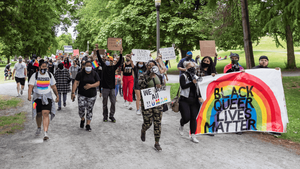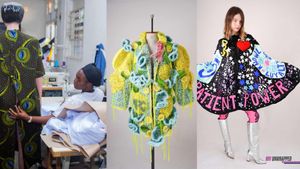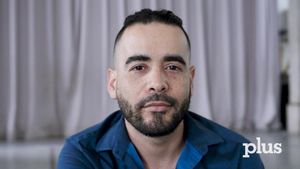August 11 2006 2:46 PM EST
CONTACTAbout UsCAREER OPPORTUNITIESADVERTISE WITH USPRIVACY POLICYPRIVACY PREFERENCESTERMS OF USELEGAL NOTICE
© 2025 Equal Entertainment LLC.
All Rights reserved
All Rights reserved
By continuing to use our site, you agree to our Privacy Policy and Terms of Use.
We need your help
Your support makes The Advocate's original LGBTQ+ reporting possible. Become a member today to help us continue this work.
Your support makes The Advocate's original LGBTQ+ reporting possible. Become a member today to help us continue this work.
Only one in five people with HIV in poor and middle-income countries receives the drugs that treat the virus, said a report by the U.S. Centers for Disease Control and Prevention on Thursday. That is despite a 200% rise in the number of people receiving the drug treatment between 2003 and 2005, as individual countries worked to meet a target of treating 3 million people with the drugs by 2005, the government agency's report said.
The dramatic increase in the number of people receiving the drugs means that globally there will be a rise in people living with HIV and thus a growing need to boost measures against HIV transmission, said the report. In all, 4.1 million people were newly infected with HIV and 38.6 million were living with HIV and AIDS in 2005 in an epidemic focused on sub-Saharan Africa.
"Approximately 10% of the world population lives in sub-Saharan Africa, but the region is home to approximately 64% of the world population living with HIV. More women are HIV-infected than men," said the report.
Some African countries including Kenya, Uganda, and Zimbabwe have seen a decline in adult HIV prevalence, but in southern Africa, the epicenter of the pandemic, only 17% of those infected with the virus received the drug treatment.
The drugs save lives by treating infections caused by retroviruses, including HIV.
The report was published ahead of the 16th International AIDS conference in Toronto, Canada, which starts August 13.
There has been major progress in the drive to prevent HIV-positive mothers passing the virus on to their children, but only 8% of the relevant women receive services such as health education, the report said.
Researchers in a separate study by the CDC and the Thailand health ministry found an "alarming" 64% increase in sex between men in Bangkok, Thailand, between 2003 and 2005 and "low awareness" of HIV status among all men in the study."
"The study underscores the need to reach [the group] with more effective behavioral and biomedical interventions, more frequent and increased access to HIV counseling and testing, improved sexually transmitted disease diagnosis and treatment, and community awareness and support," said the report. (Reuters)
From our Sponsors
Most Popular
Bizarre Epstein files reference to Trump, Putin, and oral sex with ‘Bubba’ draws scrutiny in Congress
November 14 2025 4:08 PM
True
Jeffrey Epstein’s brother says the ‘Bubba’ mentioned in Trump oral sex email is not Bill Clinton
November 16 2025 9:15 AM
True
Watch Now: Pride Today
Latest Stories
Lesbian federal worker pleads for answers about wife trapped in immigration detention limbo
December 16 2025 5:08 PM
Michigan Republican U.S. Senate candidate Mike Rogers surrounds himself with hardcore LGBTQ+ rights opponents
December 16 2025 2:53 PM
True
Florida city installs Pride bike racks after being forced to remove rainbow crosswalks
December 16 2025 2:21 PM
Ariana Grande and Jonathan Bailey in talks to star in West End musical
December 16 2025 12:26 PM
Netflix's 'Boots' is canceled: Stars react to the heartbreaking news
December 16 2025 11:37 AM
How this Minnesota city redefined LGBTQ+ rights 50 years ago
December 16 2025 11:25 AM
Gen Z women are more likely to identify as bisexual but still embrace lesbian label: study
December 16 2025 11:10 AM
Is Texas using driver's license data to track transgender residents?
December 15 2025 6:46 PM
Rachel Maddow on standing up to government lies and her Walter Cronkite Award
December 15 2025 3:53 PM
Beloved gay 'General Hospital' star Anthony Geary dies at age 78
December 15 2025 2:07 PM
Rob Reiner deserves a place in queer TV history for Mike 'Meathead' Stivic in 'All in the Family'
December 15 2025 1:30 PM
Culver City elects first out gay mayor — and Elphaba helped celebrate
December 15 2025 1:08 PM
Trending stories
Recommended Stories for You




































































Charlie Kirk DID say stoning gay people was the 'perfect law' — and these other heinous quotes